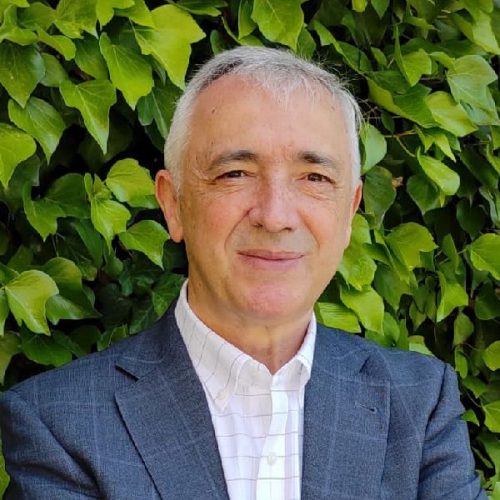May 19th
- 16:30 - 17:15 Registration.
- 17:15 - 17:30. Welcome Antonio Cuadrado, Manuela García López and Ana I. Rojo
- 17.30-19:30. Session I. Chair: Manuela G López
NRF2 activators for intervention of cardiovascular and neuropsychiatric complications by environmental pollutants and stressors
Andreas Daiber
Department of Cardiology, Laboratory of Molecular Cardiology, University Medical Center of the Johannes Gutenberg University, Mainz, Germany
Email: daiber@uni-mainz.de
Environmental risk factors, including noise, air pollution, chemical agents, ultraviolet radiation (UVR) and mental stress have a considerable impact on human health. Oxidative stress and inflammation are key players in molecular pathomechanisms of environmental pollution and risk factors. In this review, we delineate the impact of environmental risk factors and the protective actions of the nuclear factor erythroid 2-related factor 2 (NRF2) in connection to oxidative stress and inflammation. We focus on well-established studies that demonstrate the protective actions of NRF2 and its downstream pathways against different environmental stressors. State-of-the-art mechanistic considerations on NRF2 signaling are discussed in detail, including novel regulatory concepts like KEAP1 clogging and NRF2 interaction with epigenetic pathways besides classical concepts like NRF2 ubiquitination and degradation. Specific focus is also laid on NRF2-dependent heme oxygenase-1 induction with detailed presentation of the protective down-stream pathways of heme oxygenase-1, including interaction with BACH1 system. Also the significant impact of all environmental stressors on the circadian rhythm and the interactions of NRF2 with the circadian clock will be considered here. A broad range of NRF2 activators is discussed in relation to environmental stressor-induced health side effects, thereby suggesting promising new mitigation strategies (e.g. by nutraceuticals) to fight the negative effects of the environment on our health.
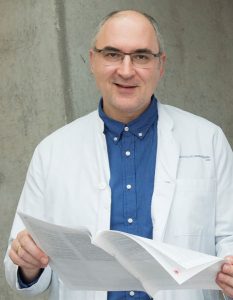
Andreas Daiber studied Chemistry at the University of Konstanz (Diploma in 1997), holds a PhD in Biochemistry (graduated in 2000), did his habilitation (graduated in 2006), and since 2008 is a full professor in Molecular Cardiology at the University Medical Center Mainz. >33 significant research grants from the pharmaceutical industry and public funding bodies. 2011 guest professorship at the Université Joseph Fourier at Grenoble, France. From 2014-2016 Chair of COST Action BM1203 (EU-ROS). Memberships in national and international scientific communities (SFRBM/SFRRE, ASBMB, DGK), reviewer activities for numerous scientific journals (e.g. FRBM, Redox Biology, ATVB, Eur. Heart J., Nat. Comm.) and funding bodies, editorial board positions (Oxid. Med. Cell. Longev., Cardiovasc. Res., Antioxidants, FRBM, Redox Biology), guest editor (Antioxid. Redox Signal., Redox Biology, Br. J. Pharmacol., FRBM, Antioxidants). He published >185 original research articles, >144 review articles, 25 book chapters, >160 conference abstracts and 3 patents with Boehringer Ingelheim. h-index: 71; >14,000 citations. Special research interests: redox biochemistry, oxidative stress and environmental research in cardiovascular disease.
How does air pollution impact on NRF2 in the context of the brain?
Katja Kanninen
A.I.Virtanen Institute for Molecular Sciences, Faculty of Health Sciences, University of Eastern Finland, Finland
Email: katja.kanninen@uef.fi
The WHO has named air pollution the ‘silent public health emergency’, since 6.5 million premature deaths from cardiovascular and respiratory conditions occur every year as a direct result of exposure. It is now increasingly acknowledged that exposure to air pollutants also impairs the brain. Chronic exposure to air pollutants is associated with harmful toxic effects in the brain, including inflammation and oxidative stress. Furthermore, living in highly polluted areas is associated with exacerbated cognitive dysfunction and with several brain disorders, yet the exact mechanisms responsible for adverse effects remain largely unknown. This presentation will demonstrate the brain responses to air pollution exposure, and showcase impacts of inhalation exposure involving NRF2, also in the context of Alzheimer’s disease. It will examine the current knowledge and present data generated using highly state-of-the-art inhalation exposure studies in rodents and sophisticated in vitro models.

Katja Kanninen is an associate professor at the A.I.Virtanen Institute for Molecular Sciences, University of Eastern Finland. She defended her thesis on NRF2 in Alzheimer’s disease and is now interested in understanding the interplay between environmental exposures such as air pollutants and NRF2. Her group works with in vivo models of neurodegeneration, and with both human and murine brain cells (primarily astrocytes and neurons), and human olfactory cells. She has published several original and review papers on NRF2, primarily in the context of Alzheimer’s disease.
Isoeugenol, a NRF2 activating molecule for Alzheimer disease
M Teresa Teixeira Cruz Rosete
Center for Neuroscience and Cell Biology, Portugal
Email: trosete@ff.uc.pt
Currently, Alzheimer’s disease (AD) is the most common form of dementia accounting for about 60–70% of global neurodegenerative diseases and is the fifth leading cause of death worldwide among the elderly population. A disease-modifying treatment is of utmost importance for AD not only for proper care and management of the affected patients, but also to reduce society’s socioeconomic burden. The activation of the nuclear factor (erythroid-derived 2)-like 2 (Nrf2), a redox transcriptional factor, provides protection against oxidative stress and inflammation, but this pathway has become unresponsive in AD thus supporting the potential therapeutic effects of molecules that activate this pathway in AD treatment. We previously developed an in-house high-throughput approach able to disclose molecules with the potential to activate Nrf2. From the panel of 40 molecules identified, we selected isoeugenol to address its effect on in vitro and in vivo studies of AD. Material & Methods: The effect of isoeugenol was investigated in vitro, in cellular models of AD, specifically in normal mouse neuronal cell lines (N2a-wt), human APP-overexpressing cells (N2a-APPwt) or the mutant (N2a-APPswe), and in the microglia mouse cell line BV-2 exposed to lipopolysaccharide (LPS), mimicking neuroinflammation. For in vivo studies, isoeugenol (50mg/kg) or vehicle (PBS) were administered intranasally in transgenic (APPswe/PSEN1dE9) animals at 5 months of age, during one month. Results: The results showed the potential of isoeugenol to mitigate neurodegenerative events by increasing the antioxidant gene Hmox1 and the levels of Nrf2 and HMOX1 proteins and by decreasing the levels of GSK3β protein in N2a-APPswe. Furthermore, the molecule also displays anti-inflammatory properties by reducing NO production, the expression of Nos2 and IL-1β genes and their respective proteins in BV-2 cells, in vitro. The treatment with isoeugenol also decreased the levels of Aβ peptides in vitro and in vivo and increased the expression of HMOX1 and ERK-p44/42 in the brains of APP/PS1transgenic mice. Conclusions: Isoeugenol demonstrated a neuroprotective and anti-inflammatory profile in both in in vitro and in vivo models of AD, thus supporting the therapeutically effect of molecules targeting Nrf2 in AD treatment.

M Teresa Cruz has been dedicated for approximately two decades to the study of the immunobiology of inflammatory processes. MT Cruz is Group Leader at CNC and PI of Innate Immunity in inflammation-related diseases group. She published 2 international patents, 6 book chapters and 180 articles in SCI indexed journals (h-index of 33, 6440 citations, Web of Science), supervised or co-supervised 15 PhD, 21 master and 3 pos-docs. She integrated 35 funded projects, being the PI of 14, namely from the EU 7th Framework Programme and from John Hopkins, USA. MT Cruz is reviewer of I&D projects from Netherlands Organisation for Scientific Research, French National Research Agency and Alzheimer’s Association Research Fellowship Program. Her group received several entrepreneurship awards and was involved in the creation of a spin-off of UC, focused on drug discovery and safety assessment of new molecules, currently performing specialized services to Cosmetics Europe and pharmaceuticals.
Effect of lipid raft disruption on NRF2, AQP3, and AQP5 in breast cancer cell lines of different malignancies
Monika Mlinarić1, Inês Vieira da Silva2, Lidija Milković1, Graça Soveral2, Ana Čipak Gašparović1
1Ruđer Bošković Institute, Bijenička 54, HR-10000 Zagreb, Croatia
2Research Institute for Medicines (iMed.ULisboa), Faculty of Pharmacy, Universidade de Lisboa, 1649-003 Lisboa, Portugal
Email: Monika.Mlinaric@irb.hr
Aquaporins are channels that facilitate water transport across the plasma membrane. In addition to water, aquaporins can also transport other small polar molecules, such as glycerol, ions, CO2, urea, and hydrogen peroxide. Transportation of these molecules regulates water balance, cell proliferation, migration, and adhesion. Because of these functions, tumor cells often have higher expression of aquaporins which supports their growth. Out of 13 mammalian aquaporins, six can facilitate hydrogen peroxide and are therefore named peroxiporins. The mere existence of peroxiporins implies their involvement in the regulation of oxidative stress and antioxidative response and could affect the NRF2 expression/activity. In addition to redox signaling pathways, peroxiporins can regulate other signaling pathways such as EGFR. Our aim was to study if lipid raft disruption affects the activity of aquaporins and thus affects NRF2 expression and possibly its translocation to the nucleus. In this study, lipid rafts were disrupted by cholesterol depletion using methyl-β-cyclodextrin. The effect of depletion was measured by MTT and BrdU incorporation assay, and the expression of targeted proteins by Western blot. Depending on the breast cancer cell line, lipid raft disruption influenced AQP3, AQP5, and NRF2 expression differently.

Monika Mlinarić is a PhD student working in the Laboratory for Oxidative Stress, Division of Molecular Medicine at Ruđer Bošković Institute. She is working on the project “Elucidating the role of aquaporins 3 and 5 in the development of breast cancer resistance to oxidative stress (AquaBCaRe)” with Dr. Lidija Milković and Dr. Ana Čipak Gašparović, who are members of this action. For her PhD, she will investigate the interaction of Nrf2 and aquaporins (channels that could facilitate the transport of hydrogen peroxide across the membrane), as well as their response to the state of chronic oxidative stress.
NRF2 and AQP5 overexpression in breast cancer
David Jajcanin, Monika Mlinaric, Ana Cipak Gasparovic, Lidija Milkovic
Laboratory for Oxidative Stress, Division of Molecular Medicine, Rudjer Boskovic Institute, Zagreb, Croatia
Email: Lidija.Milkovic@irb.hr
Nuclear factor-erythroid factor 2-related factor 2 (NRF2) is the major transcription factor activated upon an oxidative stress stimulus i.e. upon increased levels of reactive oxygen species (ROS). Its activation increases the expression of the cytoprotective genes thus protecting cells from detrimental ROS effects. However, ROS are also important for normal cellular functioning by influencing diverse redox-sensitive signaling pathways. Hydrogen peroxide is the main ROS involved in redox signaling due to its better stability. The discovery of aquaporins (AQPs), water channels, that also channel hydrogen peroxide might elucidate the hydrogen peroxide signaling role in the cell and its “communication” with the neighboring one. In this research, we focused to reveal how overexpression of NRF2 and AQP5 upon exposure to hydrogen peroxide affects breast cancer cell lines. We observed cell-type-specific differences in the viability, proliferation, migration, and expression of target proteins.
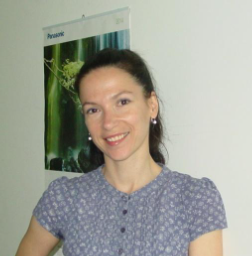
Lidija Milkovic is a Research Associate in the Laboratory for Oxidative Stress, Division of Molecular Medicine at the Rudjer Boskovic Institute in Zagreb, Croatia. She studies the role of oxidative stress, and concurrent antioxidative mechanisms, in diverse (patho)physiological processes focusing on cancer. In the last years, she was involved in a project investigating the “the driver mechanism” of cellular metabolic reprogramming through epigenetically modulated NRF2 activity in several cancer cell lines of different origins and genetic backgrounds, and its significance for patients with head and neck tumors. More recently, she works on a project of Dr. Ana Cipak Gasparovic (MC member of this COST Action) investigating the role of peroxiporins in the regulation of the cellular antioxidative system. She is also interested in understanding the intertwined regulation of antioxidative mechanisms, mainly of the NRF2 signaling, metabolic reprogramming, and the involvement of reactive oxygen species (ROS) in cancer.
May 20th
Breakfast
- 9:00 - 11:00. Session II. Chair: Gina Manda
Microenvironmental NRF2 supports growth of the orthotopic pancreatic tumors and modulates the efficacy of chemotherapy
Monika Jakubowska
Jagiellonian University Kraków, Poland
Email: monika.jakubowska@uj.edu.pl
Pancreatic ductal adenocarcinoma (PDAC) is a type of aggressive cancer characterized by a strong resistance to chemotherapy. PDAC remains one of the leading causes of cancer-related deaths, with a very low 5-year survival rate post diagnosis. A growing body of evidence suggests that novel therapeutic interventions against PDAC should target not only cancerous cells, but also specific tumor microenvironment, which could account for even up to 80% of the tumor mass. The aim of our study was to determine the role of cytoprotective transcription factor Nrf2 as a modulator of PDAC growth, as well as its response to chemotherapy. We used an orthotopic PDAC model in which Panc02 cancer cells were injected into the pancreata of the syngenic C57BL/6J mouse hosts, either wild type (WT; n=30) or Nfr2 transcriptional knockout (tKO; n=30) animals. This approach allowed to study PDAC in its natural pancreatic niche, also in the context of pancreatic cancer cell-normal cell interactions. To achieve this goal, we first transduced Panc02 cells with a lentiviral vector to obtain stable expression of the enzyme luciferase, and green fluorescent protein (GFP). Panc02-GFP-Luc cells were then injected orthotopically into the pancreata of WT or Nrf2 tKO mice, and the tumor growth was monitored by noninvasive chemiluminescence measurements (IVIS). On the 12th day post cell injection, the mice were treated with the chemotherapeutic drug gemcitabine (50 mg/kg) alone, or together with the hypoxia activated prodrug tarloxotinib (30 mg/kg); and the control mice received placebo. Our results suggest that microenvironment of the Nrf2 tKO pancreata is significantly less permissive for tumor growth compared to the WT organ, as assessed by the IVIS measurements and postmortem analyses. Also, tKO mice respond to the therapy better than the WT tumor hosts. This opens up a novel therapeutic avenue of Nrf2 modulation in order to improve the effectiveness of chemotherapeutic strategies against PDAC.

Monika Jakubowska is an Assistant Professor in Cell Physiology/Cell Signalling in the group Molecular Mechanisms of Disease, and a Research Director of the ABSL3+ Animal Unit, both at the Malopolska Centre of Biotechnology, in Krakow, Poland. Together with her coworkers, Monika investigates the role of redox imbalance in pancreatic (patho)physiology, e.g. pancreatic cancer. Other Monika’s interests centre on transition metal ions, mainly copper and iron, in (patho)physiology of the gastrointestinal tract, as well as animal models of cancer, sterile inflammation and infectious human and animal diseases.
Identifying therapeutic vulnerabilities in NRF2-dependent cancers
Anna-Liisa Levonen
A.I.Virtanen Insitute for Molecular Sciences, Faculty of Health Sciences, University of Eastern Finland, Finland
Email: anna-liisa.levonen@uef.fi
The NRF2 pathway is often constitutively activated in various cancer types, particularly in non-small cell lung cancer (NSCLC), contributing to the malignant phenotype and drug resistance. Unfortunately, direct targeting of NRF2 has remained a challenge, as it is a transcription factor with many structural homologs and functions. Therefore, indirect means to inhibit NRF2 activity through e.g. targeting factors affecting transcriptional regulation of NRF2 or downstream pathways generating cancer-specific vulnerabilities may provide alternative ways to treat NRF2 overactive cancers. Herein, various multi-omics approaches are used to discover targetable co-dependencies in cancer with constitutive NRF2 activation. It is demonstrated how publicly available genetic and drug repurposing screens can be used to identify specific vulnerabilities, and how NRF2 activation affects the efficacy of immune therapies. Also, systems proteomics approaches are used to study proteins interacting with the KEAP1-NRF2 system, potentially revealing coregulators that can be targeted for therapy.

Anna-Liisa Levonen is currently Professor and Vice Dean of Research at the University of Eastern Finland, Faculty of Health Sciences. She earned her MD and PhD degrees from the University of Helsinki, Finland in 1994 and 2000, respectively, followed by a fellowship at the University of Alabama at Birmingham (UAB), Department of Pathology and Center for Free Radical Biology. Upon her return to Finland, she was recruited to the University of Kuopio (currently University of Eastern Finland), where she has established a research program focusing on the gene regulatory mechanisms activated by oxidative and electrophilic stress, particularly via the redox-activated transcription factor NRF2. She has studied the mechanism of activation of the KEAP1-NRF2 pathway and its role in disease, particularly cancer and cardiometabolic diseases, and has published highly cited original and review articles on the topic.
The development of novel NRF2 activity and level analyses method
Sermin Genc
Izmir Biomedicine and Genome Center, Dokuz Eylul University, Izmir, Turkey
Email:sermin.genc@ibg.edu.tr
The NLRP3 inflammasome is a multiprotein complex that activates caspase-1 and triggers the release of the proinflammatory cytokines in response to diverse signals and consequent cell death, named pyroptosis. Although inflammasome activation plays critical roles against various pathogens in host defense, overactivation of inflammasome contributes to the pathogenesis of neuroinflammatory and chronic neurodegenerative disorders. Microglial cells are the primary mediator of NLRP3 inflammasome activation in the brain. Therefore, our studies are mainly related to microglial immune responses in cell culture and animal models. To test the protective role of NRF2, we have utilized protective molecules with NRF2 activating capacities, such as Sulforaphane, Melatonin, and Dimethyl Fumarate. Our studies have revealed that Nrf2 activators protected microglial cells from NLRP3 inflammasome activation and pyroptotic cell death.

Sermin Genc is MD for Neurology and PhD for Medical Biology. She is working at as an Prof. at Department of Neuroscience, Health Science Institute of Dokuz Eylul University. She also has a research lab in the Field of Neurodegeneration and Neuroprotection at İzmir Biomedicine and Genome Center. She has more than 60 research article (9 are related with Nrf2) an my h index is 39. You can find detailed information about her and her group at:
https://www.ibg.edu.tr/research-programs/groups/genc-lab/ https://scholar.google.com.tr/citations?
Carbon monoxide induces cytoprotection: the role of ROS signalling in cell metabolism modulation
Helena Luisa Araujo Vieira
UCIBIO, Applied Molecular Biosciences Unit, Department of Chemistry, NOVA School of Science and Technology, Universidade Nova de Lisboa, Portugal
Email: hl.vieira@fct.unl.pt
Carbon monoxide (CO) is a gasotransmitter endogenously produced by the activity of heme oxygenase, which is a stress-response enzyme and is under the control of Nrf2. Endogenous CO or low concentrations of exogenous CO have been described to present several cytoprotective functions: anti-apoptosis, anti-inflammatory, vasomodulation and modulation of cell differentiation. Herein it is demonstrated how CO generates small amounts of reactive oxygen species (ROS) that are signaling molecules for CO to prevent cell death, promote neuronal differentiation and mitophagy. In primary culture of astrocytes CO inhibited cell death by modulating mitochondrial function via glutathione signaling and protein glutathionylation. Using NT2 cell line model for neuronal differentiation, CO improves neuronal differentiation by reinforcing oxidative metabolism in a ROS dependent manner. More recently, CO has been shown to control mitochondrial quality control in a ROS and glutathione dependent manner, in particular by regulating the expression of the rate limiting enzyme in GSH production GCLC (unpublished data).

Helena L. A. Vieira did her PhD thesis in the fields of Cell Death and Oncobiology at CNRS, France (2002), under the supervision of Guido Kroemer, publishing in Science, Oncogene, JExp Med, Cancer Research and Cell Death Diff. To broaden her expertise, Helena did 3 postdocs in distinct areas: (i) Microbiology (2003), (ii) Biotechnology (2004-2006) and (iii) Neurobiology (2007-2011). In 2007, as a senior postdoc at iBET, she started her own research line, focusing on apoptosis modulation in the Central Nervous System, in particular on carbon monoxide-induced preconditioning and neuroprotection. In the period of 2012-2019, she has been principal investigator at CEDOC, Nova Medical School, Universidade Nova de Lisboa. In 2020, Helena became professor at UCIBIO, Faculdade de Ciências e Tecnologia, Universidade Nova de Lisboa. Nowadays, her team is well established in the Carbon monoxide (CO) Scientific Community through studies about the role of CO on cell death, cell metabolism, mitochondrial function, ROS signaling, hypoxia response, preconditioning, neuronal differentiation, neuroinflammation and phagocytosis. Moreover Helena has also some research on Nutrition about polyphenols-induced protection in cardiovascular and neurological systems. With publications as corresponding author in Redox Biology, Progress in Neurobiology, J CellScience, Mol Neurobiology, J Neurochemistry, J Biological Chemistry, PlosONE, J Physiology, British J Pharmacology. 72 peer reviewed publications (41 as first, last or corresponding author). Total number of citations: 9126 (1.03.2021). H-index: 35 (Scopus).
Cutaneous NRF2-KEAP11 pathway activation by unique activators
Ron Kohen
The Hebrew University of Jerusalem School of Pharmacy, Faculty of Medicine. Israel
Email: ron.kohen@mail.huji.ac.il
The human skin, being our outermost protective barrier, sustains a continuous contact with the environment. As such, its cells must be kept in a state of constant alert against external increased oxidative stress and massive environmental insults (e.g. sunlight and UV radiation, air pollution and mechanical stress). All these insults ultimately result in an impaired redox balance and increased cellular oxidation. One of the pivotal oxidation regulation mechanism in the skin is the Nrf2–Keap1 pathway, and its activity leads to cutaneous redox maintenance which evidently sustains the principal of hormesis. In order to fulfil this function, there is a need for continues stimuli of the Nrf2 pathway. We hypothesized that skin bacteria continuously emit a variety of compounds which possess the ability to induce the cutaneous Nrf2-Keap1 pathway (e. g. aldehydes) and therefore afford protection against oxidative stress. We also suggest that cutaneous advanced lipid-peroxidation-end-products take a part in sustaining the cutaneous redox homoeostasis via activation of the Nrf2–Keap1 protective pathway. The beneficial effect of unique environmental conditions (moderate stressors) on skin protection and skin pathologies via modulation of Nrf2 activity will be also discussed.

Ron Kohen’s laboratory is focused on the beneficial and deleterious role of reactive oxygen species in health and diseases, discovery of new antioxidant compounds, elucidation of the mechanisms involved ROS activity and targeting specific targets and pathways to affect their activity. Two biological targets the skin and brain (skin-brain axis) are the in the focus of our research. We are concentrating on the Nrf2-keap1 pathway in both organs as the most suitable pathway that affect redox changes and pathological disorders associated with reactive oxygen species. Our working hypothesis proposes that the major biochemical pathway that responses to disease conditions, endogenous deleterious process and endogenous and exogenous stressors is the cutaneous Nrf2-keap1 pathway. We demonstrated the importance of the Nrf2 pathway in skin disorders (rosacea, atopic dermatitis, psoriasis) and we elucidated the beneficial effect of unique environmental conditions on skin protection and skin pathologies via modulation of Nrf2 activity in skin.
NRF2 and Steroids
Srdjan Bjedov
Department of Chemistry, Biochemistry and Environmental Protection, Faculty of Sciences, University of Novi Sad, Serbia
Email: srdjan.bjedov@dh.uns.ac.rs
The pleiotropic role and wide expression in the tissue make the nuclear factor erythroid 2-related factor 2 (NRF2) an invaluable pharmacological target for the treatment of inflammatory, neurodegenerative, metabolic, and cancer diseases. Steroids are a broad group of compounds that, thanks to their privileged structure, control a number of important physiological functions. Therefore, it is not strange that there are significant interactions between steroid molecules and NRF2. Natural product, oleanolic acid, and their derivatives Bardoxolone and Omeveloxone are in late clinical phases for treatment of NRF2 related diseases. Ursodeoxycholic acid, an FDA-approved drug for the treatment of primary biliary cirrhosis, owes part of the therapeutic activity to interaction with NRF2. Ecdysone, a steroidal prohormone, is important for NRF2-Keap1 signaling in neuronal pruning, and through interactions with NRF2 pathway estrogens can influence anti-inflammatory effects and breast cancer. The presentation will give an overview of the relationship between NRF2 and steroidal molecules.

Srđan Bjedov is an assistant professor at the Department of Chemistry, Biochemistry and Environmental Protection, Faculty of Sciences, University of Novi Sad, Serbia. His research is focused on the synthetic and medicinal chemistry of mainly steroid compounds for the treatment of inflammatory, microbial, and cancer diseases
- 11:00 - 11:30 Coffee break.
- 11:30 - 13:30. Session III. Chair: Elena Milanesi
Role of NRF2 in renal diseases
Juan Antonio Moreno
Department of Cell Biology, Physiology and Immunology, Cordoba University, Spain
Email: juan.moreno@imibic.org
Renal disease is one of the fastest-growing causes of death worldwide. However, therapies to prevent progression of this pathology remains an unmet need. Renal disease is characterized by increased oxidative stress. Nrf2 (nuclear factor erythroid 2-related factor 2) is a master transcriptional regulator of more than 250 antioxidants genes. Pre-clinical and clinical studies have demonstrated the beneficial effects of Nrf2 activation against renal disease, in both chronic kidney disease (CKD) and acute kidney injury (AKI). We have demonstrated that Nrf2 is activated in the kidneys of patients and mice with hemolysis-AKI. Moreover, Nrf2 knockout mice showed higher renal damage and decreased expression of Nrf2-related antioxidant enzymes, including HO-1 and ferritin. By contrast, Nrf2 activation with sulforaphane protected against hemoglobin-toxicity in mice and cultured tubular epithelial cells, ameliorating renal function, kidney injury and reducing oxidative stress and cell death. Similar effects were observed with the Nrf2 inducer curcumin in rhabdomyolysis-AKI, another pathological condition associated with iron accumulation in the kidney. Therefore, our results indicate that Nrf2 may be a key molecule involved in protection against renal damage associated to hemolysis/rhabdomyolysis.
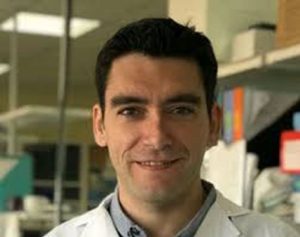
Juan Antonio Moreno is a Ramon y Cajal Tenure Track Researcher at the Department of Cell Biology, Physiology and Immunology (Cordoba University, Spain). Head of the Group GE-06 “Pathophysiology of renal and vascular damage” at Maimonides Research Institute of Cordoba (IMIBIC). My group is unravelling novel pathogenic mechanisms involved in the development of renal and vascular diseases (atherothrombosis, diabetic nephropathy, glomerular diseases, acute kidney injury, renal fibrosis, among others). We aim to understand the basis of the alterations occurring in both kidney and arterial wall by targeting specific pathways to decrease the progression of these pathologies. Specifically, we are interested in certain cellular and molecular mechanisms, such as oxidation, inflammation, apoptosis and fibrosis. In the last years, we have evaluated the role of Nrf2 in acute kidney injury and are interested in the validation of novel compounds targeting Nrf2 to decrease both renal and vascular damage.
Role of Nrf2/DJ-1 pathway and NLRP3 inflammasome attenuation in the prevention of diabetic nephropathy
Santiago Cuevas Gonzalez
Instituto Murciano de Investigación Sanitaria Virgen de la Arrixaca, Murcia, Spain
Email: santiago.cuevas@imib.es
Kidney diseases remain a worldwide public health problem characterized by sustained inflammation. The Inflammasome is a crucial regulator of renal inflammation. NLRP3 inflammasome activation has been strongly associated with diabetic nephropathy. DJ-1 is a redox-sensitive chaperone with anti-inflammatory properties in the kidney, in part due to the regulation of Nrf2, which regulates the expression of several antioxidant genes. ND-13 is a peptide consisting of 13 highly conserved aas from the DJ-1 sequence. In this study we determined the capacity of ND-13 and DJ-1/Nrf2 pathway to attenuate inflammasome activation in diabetic nephropathy. Mouse bone marrow macrophages (BMM) were treated with Bardoxolone and ND-13. IL-1β concentration in the medium was decreased for pre-treated with Bardoxolone, but not in BMM pre-treated with ND-13, after the NLRP3 inflammasome stimulation by LPS/ATP. Concentration-response curve demonstrates the capacity of Bardoxolone to inhibit NLRP3 inflammasome activation by LPS/ATP. Additionally, in presence of H2O2 (100nM), ND-13 significantly decreased IL-1β release after NLRP3 activation, suggesting the capacity of the ND-13 peptide to reduce NLRP3 inflammasome activity under pathological conditions. Diabetes was induced in C57Bl/6 mice via injection of STZ and treated with ND-13. Peritoneal macrophages were obtained. STZ treatment increased the IL-1β production compared with the control in cells pretreated by LPS/ATP, suggesting that inflammasome may be activated in diabetes. ND-13 treatment normalized inflammasome activity in peritoneal macrophages from diabetic mice. PBMCs isolated from the blood of patients were stimulated with LPS/ATP, and patients with diabetic nephropathy presented a trend to increase IL-1β release compared to controls and diabetic individuals. All these data point out that inflammasome pre-activation could have a role in the pathogenesis of diabetic nephropathy, that DJ-1/Nrf2 pathway stimulation is a promising approach to decreasing immune cells inflammasome pre-activation, and ND-13 could be a new approach to protect the renal damage associated to inflammasome over-activation in renal diseases.

Santiago Cuevas is the PI with 20 years of research experience in the academy and industry in basic and clinical research of cardiovascular and renal diseases and hypertension. In the last 10 years, he was working in research in the United States in the study of the pathways involved in the regulation of oxidative stress and inflammation in the pathogenesis of renal diseases and hypertension. At the present, he is a first year Saavedra Fajardo investigator in the Institute of Biomedical Research in Murcia (IMIB) funded by Seneca Foundation from Murcia. The project presented in this proposal included the hard work performed during the last 10 years in the study of the protective role of DJ-1/Nrf2 in the kidney (published in 2012), to consider it a promising an interesting pathway with interesting application in renal diseases as demonstrated his previous publications in the field.
GSK3 regulation of Nrf2 in pancreatic islets; a potential target for protecting beta cell decline in type 2 diabetes?
Calum Sutherland
Division of Systems and Cellular Medicine. Ninewells Medical School, University of Dundee, Dundee. UK
Email: c.d.sutherland@dundee.ac.uk
KEAP1 is the primary regulator of NRF2 stability however recent studies have established a direct regulation of NRF2 by GSK3, independent of KEAP1. The physiological role of this regulation remains to be fully elucidated. Meanwhile, GSK3 and NRF2 have independently been associated with beta cell proliferation, survival and function in pancreatic islets. These studies provide evidence for the decline in beta cell function in type 2 diabetes being exacerbated by poor NRF2 responses. We hypothesise that the reduction of NRF2 stability by GSK3 hyperactivation in diabetes provides a potential mechanistic link underpinning the overlapping actions of abnormal GSK3 and low NRF2 on beta cell biology. I will present our data confirming an upstream role for GSK3 in the regulation of NRF2 on beta cell biology. Interfering with the hyperactivation of GSK3 in diabetes, reducing priming of NRF2, and/or stabilising NRF2, should slow down the beta cell decline that is part of type 2 diabetes pathophysiology.

Calum Sutherland graduated from St Andrews University with a BSc in Biochemistry and obtained his PhD under the supervision of Professor Sir Philip Cohen at the University of Dundee studying the newly discovered protein GSK3. He has held personal research fellowships from the American Diabetes Association (at Vanderbilt University in Tennessee), the Wellcome Trust and Diabetes UK (non-clinical Senior Research Fellowship). He has discovered molecular pathways required for insulin regulation of glucose production in the liver, glucose storage in muscle and cell death in the brain. His work links dyregulation of insulin signalling mechanisms to several metabolic diseases, especially diabetes. He has studied the molecular connections between diabetes and dementia and collaborated with diabetologists to use human genetic data to guide experimental studies to improve prescribing of the anti-diabetes therapy, metformin. Most recently, the group is focussed on two main themes; a) the role of the insulin regulated protein GSK3 in human disease development, and b) improving the classification of Type 2 diabetes to improve diabetes prevention. He is Director of the Dundee Diabetes Research Centre, Leads the Scottish Universities Life Sciences Alliance Theme- Understanding and Treating Disease, a member of the Diabetes UK Clinical Studies Group on causes of Diabetes, a member of the Executive Board for the Scottish Diabetes Prevention Programme, and he organised the 10th World Congress on the Prevention of Diabetes and its Complications.
NRF2 deficiency protects against high fat diet-induced obesity-a role for sirtuin 1
Roberta Foresti
Faculty of Health, University Paris-Est Créteil, INSERM, Créteil, France
Email: roberta.foresti@inserm.fr
Obesity is associated with metabolic dysregulation characterized by insulin resistance and glucose intolerance. Nuclear factor E2-related factor (Nrf2) is a critical regulator of the stress response and Nrf2-deficient mice (Nrf2-/-) are protected against high fat diet (HFD)-induced metabolic derangement. We searched for factors that could underline this favorable phenotype and found that Nrf2-/- mice exhibit higher circulating levels of sirtuin 1 (Sirt1), a key player in cellular homeostasis and energy metabolism, compared to wild-type mice. Increased Sirt1 levels in Nrf2-/- mice were found not only in animals under standard diet but also following HFD. Interestingly, we report here that the visceral adipose tissue (eWAT) is the sole source of increased Sirt1 protein in plasma. eWAT and other fat depots displayed enhanced adipocytes lipolysis, increased fatty acid oxidation and glycolysis, suggesting autocrine and endocrine actions of Sirt1 in this model. We further demonstrate that removal of eWAT completely abolishes the increase in circulating Sirt1 and that this procedure suppresses the beneficial effect of Nrf2 deficiency on glucose tolerance, but not insulin sensitivity, following a HFD regime. Thus, in contrast to many other stressful conditions where Nrf2 deficiency exacerbates damage, our study indicates that up-regulation of Sirt1 levels specifically in the visceral adipose tissue of Nrf2-/- mice is a key adaptive mechanism that mitigates glucose intolerance induced by nutritional stress.

Roberta Foresti has been interested for a long time on heme oxygenase-1 (HO-1), a gene regulated by the Nrf2 system. In addition to basic research that explores the significance of HO-1 and its products carbon monoxide (CO and bilirubin in biology and disease, I also work on drug discovery approaches that targets HO-1 and Nrf2 in inflammatory and stress conditions. Recently, I have worked on Nrf2 in obesity and metabolism.
NRF2 Virtual screening based on ChEMBL bioactivity records. Molecular interactions networks.
Sergio Senar
DrTarget (https://doctortarget.com/), Alcalá de Henares, Spain
Email: senars00@gmail.com, info@doctortarget.com
ChEMBL is a manually curated database of bioactive molecules with drug-like properties. It brings together chemical, bioactivity and genomic data to aid the translation of genomic information into effective new drugs. It stores more than 18M bioactivity records for >1.8M molecules in 14k different gene targets and hundreds of thousands phenotypic experimental models. Regarding NRF2, ChEMBL contains almost 100k bioactivity records from 207 assays carried out with 87k distinct molecules, 1918 out of them being known drugs. These molecules show 2.5M additional interactions in >200k non NRF2 phenotypic or target-based assays. This information has been assembled to develop machine learning models based thus enabling virtual screenings for NRF2 activators and inhibitors that resulted in > 30k potentially active molecules in either mode: activation or inhibition. Beyond the potential of these substances for appropriate confirmation screening cascades and further progression through oriented disease models, the observed relations have been used to build weighed drug-gene-pathway interaction networks directed to support and prioritize target identification, drug repurposing and pathways analysis. In this communication, we will go through how full network analysis by centrality, connectivity and modularity measures leads to the identification of specific activity clusters associated to biochemical descriptors as biological activity properties, target types, structures and signalling paths.
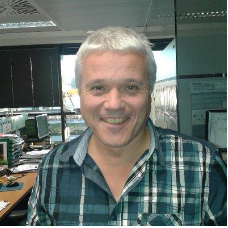
Sergio Senar is a cell biologist and biochemist with extended experience in the field of drug discovery and strong background in data analytics for biomedicine research. With more than 2 decades experience as team leader, project manager and technology advisor in the big pharma industry, supporting preclinical target to candidate programs. Founder of DrTarget (https://doctortarget.com/), currently devoted to machine learning and predictive analytics applied to biomedicine: Virtual screening, prediction of activity, target identification, target validation, pathways analysis, drug repurposing, indication expansion and drug resistance models based on genetic signature. Key fields: drug discovery, target identification, systems biology, networks analysis, machine learning, biochemistry, cell biology.
- 13:30 - 14:00 Lunch
- 14:30 - 16:30. Session IV. Chair: Ana I Rojo
NRF2 as a new epigenetic modulator
Isabel Lastres-Becker
Department of Biochemsitry. Faculty of Medicine. Autonomous University of Madrid, Spain
Email: ilbecker@iib.uam.es
Epigenetic modifications modulate cellular gene expression, and among the main factors involved in altering the epigenetic state we find oxidative stress. Thus, epigenetic alterations will lead to changes in cell functionality and the development of pathological processes. One of the primary mechanisms of cell detoxification is regulated by the transcription factor NRF2, master regulator of redox homeostasis, controlling the expression of cytoprotective genes that contain ARE sequences in their promoters. It has been described that the expression of NRF2 can be regulated by epigenetic modifications, however, it is not known if NRF2 can modulate the expression of genes involved in epigenetic mechanisms such as histones deacetylases (HDACs), DNA methyltransferases (DNMTs) or in the biogenesis of miRNAs. Our results showed that the expression of HDACs, DNMTs and several proteins implicated in miRNA biogenesis, like DROSHA and DICER are dependent on the transcription factor NRF2 and there is a feedback loop between miRNAs and NRF2 modulation.
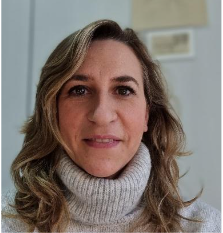
Isabel Lastres-Becker has more than 20 years of experience in the field of neurodegenerative diseases. Her work is focused on the molecular bases of the neurodegeneration related to proteinopathy, neuroinflammation and oxidative stress. She is the head of the laboratory of “New therapeutic strategies in neurodegenerative diseases: Parkinson’s disease (PD), tauopathies and amyotrophic lateral sclerosis (ALS)”. Since 2008 she has been interested in the implication of the transcription factor NRF2 in neurodegeneration, endorsed by the 18 publications in relevant international journals. Her wide research background covers most prevalent neurodegenerative diseases, looking for reliable markers of progression that can also serve as drug targets for modulating neurodegeneration, as NRF2. She is engaged in the development of advanced new drugs and appropriate technology to establishing treatments for those diseases, based on NRF2.
Implication of microglial HO-1 in aging and Alzheimer´s
Manuela G. Lopez
Department of Pharmacology. Medical School and Institute Teofilo Hernando. Autonomous University of Madrid, Spain
Email: manuela.garcia@uam.es
Neuroinflammation and oxidative stress are being recognized as characteristic hallmarks in many neurodegenerative diseases such as Alzheimer’s disease (AD). Heme-oxygenase 1 (HO-1) is an inducible enzyme with antioxidant and anti-inflammatory properties, while microglia are the immune cells in the central nervous system (CNS). To elucidate the brain expression profile of microglial HO-1 in aging and AD-progression, we have used the 5xFAD mouse model at different ages (4, 8, 12 and 18 months). Furthermore, we have used aged (18 months) wild type (WT) and LysMCreHmox1△△ (HMOX1M-KO) mice, that lack HMOX1 in microglial cells, exposed to a proinflammatory stimuli induced by i.p. injection of LPS. We found that total brain expression of HO-1 was increased with aging and such increase was even higher in 5xFAD animals. In co-localization studies, HO-1 expression was mainly found in microglia vs other brain cells. Microglia overexpressing HO-1 was predominately found surrounding beta-amyloid plaques. Using postmortem brain samples from AD and aged matched controls, HO-1 was also upregulated and preferentially located in microglial cells in samples from AD patients. Under inflammatory conditions (i.p. LPS), aged WT mice showed higher basal expression levels of HO-1 and this was accompanied by alterations in different iron-related metabolism proteins, resulting in an increase of non-heme iron, oxidative stress, ferroptosis and cognitive decline. Furthermore, microglia exhibited a primed phenotype and inflammatory markers like iNOS, p65, IL-1. TNF-, Caspase 1 and NLRP3 were increased. Surprisingly, all these alterations were prevented in HMOX1M-KO mice or in mice treated with the HO-1 inhibitor Zinc protoporfyrin (ZnPP) or the iron quelator deferoxamine. In conclusion, this study highlights how microglial HO-1 overexpression, increases with aging, and especially in AD and inflammatory conditions, how it contributes to neurotoxic iron accumulation, providing deleterious effects.

Manuela G. Lopez is MD PhD and full professor of Pharmacology at the Department of Pharmacology in the School of Medicine, Universidad Autonoma de Madrid (UAM) Spain. Currently, she heads the Institute Teofilo Hernando for drug discovery (http://www.ifth.es/) that belongs to UAM. Her group, “NeuroprotectionLab”, has particular interest in the identification of new potential therapeutic targets to develop innovative and disease modifying therapies for neurodegenerative diseases, with special focus in modulating neuroinflammation (microglia-astrocyte interaction), oxidative stress and autophagy. Within the field of NRF2, she has contributed to the understanding of NRF2 in pain, depression, stroke and neurodegenerative diseases, together with the development of different NRF2 multitarget drugs in collaboration with medicinal chemists. Currently, she is coordinating a drug development project to identify Keap1-NRF2 inhibitors with potential use in Alzheimer’s disease.
Exploring NRF2 as a therapeutic target in early and intermediate age-related macular degeneration.
Sandra Tenreiro
CEDOC – Chronic Diseases Research Center. Portugal
Email: stenreiro@nms.unl.pt
Age-related macular degeneration (AMD) is the most common blinding disease in the western world and is currently incurable. The primary cause of pathology appears to be retinal pigment epithelium (RPE) thinning, accumulation of autofluorescence (lipofuscin) and depigmentation, leading to atrophy and accumulation of extracellular deposits called drusen between the RPE and the choroid. The RPE is responsible for the daily digestion of photoreceptor outer segments (POS), which imposes a heavy continuous burden on the lysosomal network. We have developed a model system that recapitulates some AMD features in vitro; feeding RPE monolayers in culture with POS leads to accumulation of autofluorescent granules similar to lipofuscin in vivo, resembling RPE stress and disease. Notably, over-expression of the transcriptional regulators TFEB and NFE2L2/NRF2 can prevent the formation and/or resolve autofluorescent granules. Curcumin analogues C1 and C2, described as inducers of both TFEB and NRF2 or TFEB alone, respectively, were able to significantly decrease uvPOS-dependent AF. Treatment with the NRF2 activator Dimethylfumarate also leads to a significantly decrease in POS-dependent AF, reinforcing NRF2 is a promising therapeutic target for AMD. We are currently dissecting the molecular mechanisms underlying the prevention and/or clearance of autofluorescent granule load in RPE models by macroautophagy and the anti-oxidative stress response. Concomitantly, we plan to test pharmacological NRF2 activators in our RPE models, focusing on repurposing clinically tested drugs.

Sandra Tenreiro research is focused in clarifying the molecular mechanisms of retinal degeneration in the context of ageing diseases, using cellular models retinal pigmented epithelium and 3D retinal organoids, differentiated from human iPSc. ST is a Group Leader at NOVA Medical School, Universidade Nova de Lisboa, Portugal. She holds a PhD degree in Biotechnology since 2001. She was Principal Investigator (PI) and Co-PI in several research projects and has participated extensively in advanced training, supervising post-docs (6), PhD (4) and MSc students (14). Collaborates in several PhD and MSc programs from Universidade Nova de Lisboa but also from Coimbra University. Globally, her scientific career is reflected in 51 peer-reviewed publications with an H-INDEX of 29 (according to Scopus).
Targeting the NRF2-BACH1 axis. Novel BACH1 and dual BACH1/KEAP1 inhibitors
Laureano de la Vega
Division of Cellular Medicine, University of Dundee, UK.
Email: l.delavega@dundee.ac.uk
NRF2 is a transcription factor that controls a wide variety of genes encoding for antioxidant, detoxification and anti-inflammatory proteins. Although the main negative regulator of the NRF2 pathway is KEAP1, there are additional factors that also negatively regulate the pathway. One of those factors is BACH1 (broad complex, tramtrack and bric à brac and cap’n’collar homology 1), a transcription factor that competes with NRF2 for its binding to the promoter of a subset of NRF2 target genes, being the potent antioxidant and anti-inflammatory enzyme HMOX1 the best characterised. While KEAP1 inhibitors induce the expression of numerous cytoprotective genes, BACH1 inhibition activates only a few, but it is extremely potent at inducing HMOX1. Additionally, BACH1 also regulates genes involved in cancer metastasis and tumour metabolism (in a NRF2-independent manner). Based on this, BACH1 is a potential target not only against a variety of conditions linked to oxidative stress and inflammation, but also against tumour metastasis. Despite their therapeutic potential, only a few BACH1 inhibitors have been identified so far, and none has entered the clinical scenario yet. In this talk I will mainly focus on unpublished data on the identification and characterisation of novel BACH1 and dual BACH1/KEAP1 inhibitors and some of their potential uses.

Laureano de la Vega is a Senior Lecturer in the School of Medicine at the University of Dundee. He is a cancer biologist interested in the signalling pathways deregulated in cancer and their potential use as a therapeurtic targets. In that sense, part of his research has focused on to better understand the NRF2 and BACH1 pathway in normal and tumour cells. In recent years he has focused on the transcription factor BACH1, and important regulator of both antioxidant and anti-inflammatory responses, and also cancer cell metabolism and metastatic potential. Laureano is interested on how BACH1 is regulated and on the identification of novel ways/compounds to inhibit it.
NRF2 clinical-trial landscape
Marisa Antunes and Fernando Antunes
Centro de Química Estrutural, Institute of Molecular Sciences, Departamento de Química e Bioquímica, Faculdade de Ciências, Universidade de Lisboa, Lisboa, Portugal.
Email: fantunes@fc.ul.pt
Nrf2 (Nuclear factor-erythroid factor 2-related factor 2) is a transcription factor encoded by the NFE2L2 gene in humans. This factor is one of the major regulators of antioxidant enzymes and cytoprotective genes, and in some diseases the deficient production of this factor increases oxidative damage, inflammatory processes, and cellular apoptosis. However, by protecting cells from oxidative stress, Nrf2 expression is elevated in some cancers, promoting the growth and proliferation of these cells. Several clinical trials have assessed the importance of Nrf2 as a biomarker in severity and presence of disease, and as a therapeutic target in the control or treatment of illnesses. From the clinicaltrials.gov repository, we selected 55 trials, 10 related to biomarkers and 45 related to therapeutic targets of Nrf2, where interventions with chemically defined compounds were studied. A total of 4606 participants (biomarkers trials: 1381 participants; drugs trials: 3225 participants) of male and female gender with ages between 3 and 99 years old (biomarkers trials: 19-75 years; drugs trials: 3-99 years) participated in these trials. The most studied diseases include chronic (chronic obstructive pulmonary disease, chronic kidney disease), autoimmune (antiphospholipid syndrome, rheumatoid arthritis), neurodegenerative (Friedreich’s ataxia, multiple sclerosis, alzheimer), cardiovascular (atherosclerosis, carotid stenosis) and carcinogenic diseases (acute myeloid leukemia, rectal, bladder and breast cancer). In the trails that assessed Nrf2 as a therapeutic target, the diseases that stand out more are cancer (13 trials) and chronic kidney diseases (9 trials). In these trials, drugs (16 trials), phytonutrients (23 trials), peptides (2 trials), vitamins (2 trials) and hormones (2 trials) have been studied. Sulforaphane is the most studied phytonutrient (13 trials) and pevonedistat (2 trials), dimethyl fumarate (1 trial), N-acetyl cysteine (1 trial), and hydralazine (1 trial) are some examples of drugs that are under study.
This work was supported by UIDB/00100/2020 and UIDP/00100/2020 (from Fundação para a Ciência e a Tecnologia, PIDDAC, Portugal) and COST Action BenBedPhar CA20121.
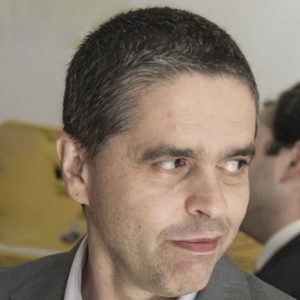
Associate Professor at Universidade de Lisboa, Fernando Antunes (PhD in Biochemistry) was Research Associate at University of Southern California (USA), and Visiting Researcher in the Linköping (Sweden) and Matsuyama (Japan) universities where he investigated the toxicology of hydrogen peroxide. He has over 70 publications, some in the top 1% in terms of impact, collecting over 6000 citations from peers, mostly in the field of redox regulation, with particular emphasis in hydrogen peroxide redox signaling and development of novel oxidant delivery nanomaterials. Research methodologies employed by Fernando combine mathematical models with experimental approaches based on quantitative biology. Recently, Fernando is developing a thermodynamic approach to monitor the fitness of living cells and probe resource allocation tradeoffs between proliferation and maintenance/stress response.
- 16:30 - 17:00. Coffee break
- 17:00 - 18:30. Session V. Chair: Antonio Cuadrado
The NRF2 activator M102 for treatment of amytorophic lateral sclerosis
Richard Mead
Keapstone therapeutics, Sheffield, England
Email: r.j.mead@sheffield.ac.uk
ALS is a devastating neurodegenerative disease for which new therapies are urgently needed and activation of NRF2-directed transcription is a valid strategy which targets multiple ALS-related pathomechanisms. M102 (S[+]apomorphine) is a CNS penetrant small molecule electrophile which activates the NFE2-related factor 2-antioxidant response element (NRF2-ARE) pathway. Early work showed neuroprotection via preservation of neuromuscular junction denervation and improved motor performance in the SOD1G93A transgenic mouse model of ALS. We obtained orphan designation for M102 in ALS and subsequently formed a partnership with Aclipse Therapeutics to develop this molecule further. We found that M102 can also increase transcription of heat shock element (HSE) associated genes that upregulate molecular chaperones to improve proteotoxic stress. We went on to investigate the pharmacology and efficacy of M102 in the TDP-43Q331K transgenic mouse mode of ALS. Significant improvements in compound muscle action potential (CMAP) amplitude and gait parameters were observed in M102 dosed animals at 6 months of age. Tissue analysis showed elevation in NRF2 target genes in the cortex at 3 months of age and upregulation in HSF targets at 3 and 6 months. These data further strengthen the rationale for clinical evaluation of M102 in ALS patients. To further support this objective, clinical biomarkers have been developed and evaluated in ALS patients and controls (GSH imaging by magnetic resonance spectroscopy and oxidised GSH measurements in cerebrospinal fluid). Manufacturing scale up and preclinical toxicology to support clinical trials of M102 in ALS are currently underway.

Richard Mead is a Senior Lecturer (associate professor) at the Sheffield Institute for Translational Neuroscience and founder and CSO of Keapstone Therapeutics. He has extensive experience in preclinical drug discovery in academia and industry with a track record of taking compounds through preclinical programs to nomination for clinical development. He has previously identified an electrophilic Nrf2 activator which obtained orphan designation with the EMA for MND. He is a named inventor on 38 patents in 5 families, has authored 20 scientific publications and raised funding of £9M as primary investigator and founder.
Wasabi extract containing Hexaraphane(6-MSITC) for improving cognitive function
Isao Okunishi
R&D division, Kinjirushi co., ltd., Nagoya, Japan
Email: i-okunishi@kinjirushi.co.jp
6-Methylsulfinylhexyl isothiocyanate (hexaraphane, 6-MSITC) is a compound produced by cleavage of glucohesperin by the enzyme myrosinase. It is very abundant in the Japanese herb wasabi. Oral administration of hexaraphane exerts antioxidant effects and improves cognitive function through activation of NRF2 and other pathways. It is suggested that long-term intake of Wasabi sulfinyl™ will improve concentration, judgment, episodic and working memory skills. One hour after Wasabi sulfinyl™ intake, an increase in blood flow to the left dorsolateral prefrontal cortex (DLPFC) and an improvement in working memory were observed. Wasabi sulfinyl™ is suitable for daily use because it is a highly safe food material and it is expected to improve cognitive function after taking only 100 mg/day

Isao Okunishi is the head of the R&D department of Kinjirushi, a wasabi processing company. He and his colleagues are studying hexaraphane (6-MSITC), one of the substances in wasabi rhizome that has excellent pharmacological properties. Hexaraphane is a substance that activates NRF2 and that is abundant in wasabi. Wasabi has been used as a medicinal herb in Japan for more than 1,000 years, and they have focused on hexaraphane as a major health-effective ingredient contained in wasabi and have been conducting research for more than 20 years. This time, he will provide us with topics centered on clinical trials related to improving cognitive function, from among the characteristics that wasabi extract containing hexaraphane exerts various antioxidant functions mainly through the KEAP1-NRF2 pathway.
A NRF2 inhibitor for treatment of autism spectrum disorder
Laura Perez-Cano
Stalicla S.A, Geneve, Switzerland
Email: laura.perez-cano@stalicla.com
Nuclear factor erythroid 2-related factor 2 (Nrf2) is a master transcription factor regulator of antioxidative responses triggered, among other, by injury and inflammation (DOI: 10.1016/j.bbamcr.2018.02.010; DOI: 10.1016/j.freeradbiomed.2015.04.036). Several inter-related cellular pathways share Nrf2 as a central core node of convergence, including the mammalian Target of Rapamycin (mTOR) pathway and the Phosphoinositide 3-kinase-Protein kinase B (PI3K-Akt) pathway, both extensively reported to be disrupted in some patients with Autism Spectrum Disorder (ASD) and neurodevelopmental disorders (NDDs; DOI:10.1016/j.ijdevneu.2014.03.006). STALICLA’s first-in-class NDD-precision medicine platform, DEPI, has allowed to generate a computational model linking the physiopathology of a clinically actionable subgroup of ASD patients, ASD Phenotype 1 (ASD-Phen1), with dysregulation of the Nrf2-related molecular pathways. Prospective observational and biosampling studies have confirmed the existence of patients with ASD matching the clinical criteria for ASD-Phen1, with an observed prevalence of around 20-25%. These studies have also provided biological validation for the dysregulation of the Nrf2-related signaling pathways in ASD-Phen1 patient-derived cells, by metabolic and transcriptomic profiling. Finally, DEPI technology has allowed the identification of a tailored treatment, STP1, capable to revert the specific Nrf2 dysregulations in ASD-Phen1. A Phase 2 clinical trial with STP1 is expected to be launched by STALICLA by the end of the year.

Laura Perez-Cano is head of Discovery, deputy Head of Discovery and belongs to the data Science Unit, DDS of Stalicla.
- 18:20 - 18:30. Concluding remarks. Antonio Cuadrado.
- 21:00. Closing dinner
May 21th
Breakfast and departure











